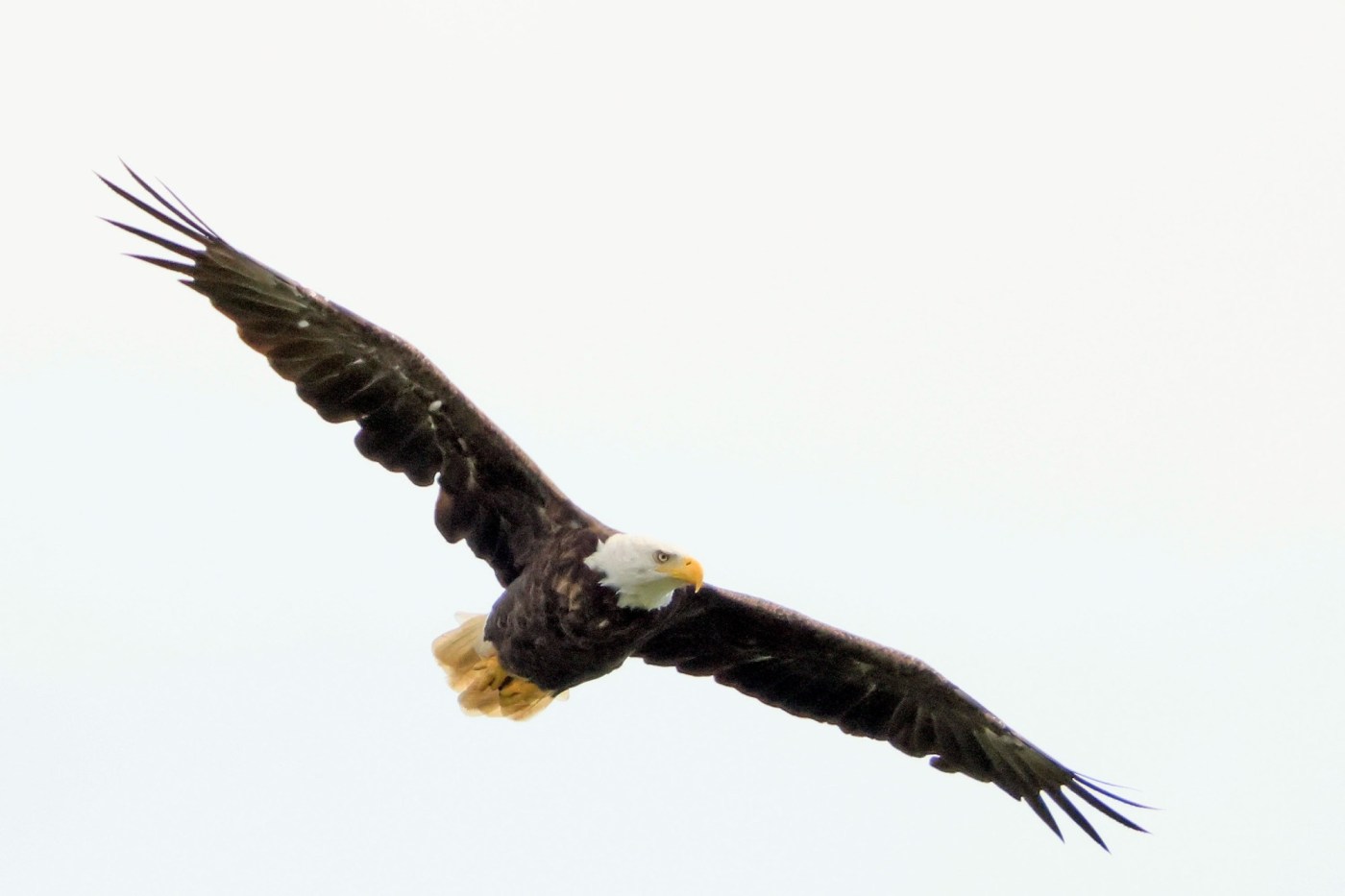Mike Magner | (TNS) CQ-Roll Call
WASHINGTON — The bald eagle is poised to officially rise to its long-assumed perch as the national bird of the United States if House members follow suit when they return from recess and pass legislation that sailed through the Senate.
The Senate took the first step toward that designation on July 29 by unanimously passing a bill offered by members of both parties from states with large populations of eagles, including Minnesota and Wyoming.
The proposal now awaits approval by the House Judiciary Committee before it can go to the House floor for a vote possibly this fall. Rep. Brad Finstad, R-Minn., has sponsored the House companion bill with bipartisan support from a dozen other members.
“We’re hopeful there will be some action in the next few weeks,” said Finstad spokeswoman Abigail Gost.
Preston Cook of Wabasha, Minn., one of two experts on the bald eagle who discovered that it has never been formally named the national bird by Congress, said he has heard of no opposition to the legislation and expects it to be on President Joe Biden’s desk soon.
“It’s a feel-good thing, especially at a time with all the divisiveness we have,” said Cook, who has been collecting eagle memorabilia since his childhood in San Francisco in the 1960s. He wrote a book, “American Eagle: A Visual History of Our National Emblem,” that features some of the more than 40,000 items from his collection now on display at the National Eagle Center near his current home on the banks of the Mississippi River.
University of Florida history professor Jack E. Davis, another eagle researcher and author of “The Bald Eagle: The Improbable Journey of America’s Bird,” published in 2022, has joined Cook’s cause.
Together the authors took their research to members of Congress, including Minnesota Democratic Sens. Amy Klobuchar and Tina Smith. Kloubuchar sponsored the bill to designate the bald eagle as the national bird, and Smith was joined by Sens. Cynthia Lummis, R-Wyo., and Markwayne Mullin, R-Okla., as co-sponsors.
Since Roll Call reported Aug. 5 on Senate passage of the bill, more than 700 media outlets have run with the story, including The Times of London, and NBC News sent a crew to Wabasha last month to tour the Eagle Center, Cook said.
“It’s a surprise to a lot of people” that the designation was never made, he said.
The bald eagle has been the symbol of the nation since June 20, 1782, when the Second Continental Congress adopted the Great Seal of the United States featuring an eagle with an olive branch in one talon and 13 arrows in the other to represent the first states in the union.
But Congress never declared the bald eagle as the national bird in the same way that each of the 50 states has a state bird, such as the Baltimore oriole in Maryland and the mockingbird in Mississippi.
“It took so long because there’s been that assumption that everybody has that the bald eagle has always been our national bird,” Davis said. “We have the Great Seal of the United States to blame for that, because the bald eagle is on the front … and has been since 1782. And ever since then it’s been a powerful symbol of our country, and it’s highly visible, likable, admired, and all over popular culture.”
While widely respected as one of the largest and fastest raptors in North America, the bald eagle has also been seen as a savage predator, a view that nearly led to its extinction as the birds were often killed to protect small animals on farms and in people’s backyards, Davis said.
Even John J. Audubon, the renowned ornithologist who famously painted images of birds, was said to have despised eagles because they preyed on other species, calling it the “dreaded enemy of the feathered race.”
As the eagle population dwindled, Congress passed a law in 1940 making it illegal to possess, kill or sell the birds. Eagles rebounded, but then another threat arose after World War II when the pesticide DDT was widely used in the United States to control mosquitoes and other insects. The chemical caused thinning of eagle eggshells, decimating the eagle population, and the bird was listed as an endangered species in 1978.
A ban on DDT in 1972 enabled bald eagles to recover again, to the point where the bird was removed from the endangered species list in 2007. There are now more than 300,000 of the birds estimated to be thriving in the lower 48 states.
There are still threats, however. Officials at the World Bird Sanctuary in Missouri, a privately funded refuge run in partnership with the state Department of Natural Resources, reported in August that a bald eagle was being treated for a gunshot wound in its beak, making it the 390th injured bird treated at the sanctuary this year, according to The Associated Press.
And earlier this year a 48-year-old man from Washington state pleaded guilty to charges of killing bald eagles at the Flathead Indian Reservation in Montana and selling their body parts and feathers on the black market, federal prosecutors said.
In February, the U.S. Fish and Wildlife Service issued new permitting rules to protect eagles from wind turbines and power line projects, both growing problems for eagles as the nation moves toward cleaner energy.
Additional eagle facts found in the federal legislation and from experts:
The bald eagle image is the main insignia for all branches of the U.S. military and for many federal agencies and is part of the logo or brand for innumerable businesses, private organizations and sports teams, according to the congressional legislation.
Bald eagle festivals are held annually in more than 100 communities across America, the bill states.
The bald eagle is not actually bald, but has a full head of feathers. Its name comes from the word “piebald,” meaning a place of black and white patches, according to a Library of Congress blog by reference specialist Ashley Cuffia.
“Since they mate for life, the breeding pair will return to the same nest every year to lay their eggs and enlarge the nest. Nests have been found that are the size of cars, the average weighing up to 2,000 pounds,” Cuffia wrote.
States with the bald eagle on their flag or seal include Illinois, North Dakota, Oregon, Pennsylvania and Utah.
Benjamin Franklin sometimes ridiculed the bald eagle’s “exalted cultural status,” but the founding father did not advocate for the turkey to be the national bird, Jack E. Davis wrote in his book, “The Bald Eagle: The Improbable Journey of America’s Bird.” For the national symbol, Franklin “did not want the turkey; he wanted Moses. Yes, the biblical Moses.”
_____
©2024 CQ-Roll Call, Inc., All Rights Reserved. Visit cqrollcall.com. Distributed by Tribune Content Agency, LLC.












